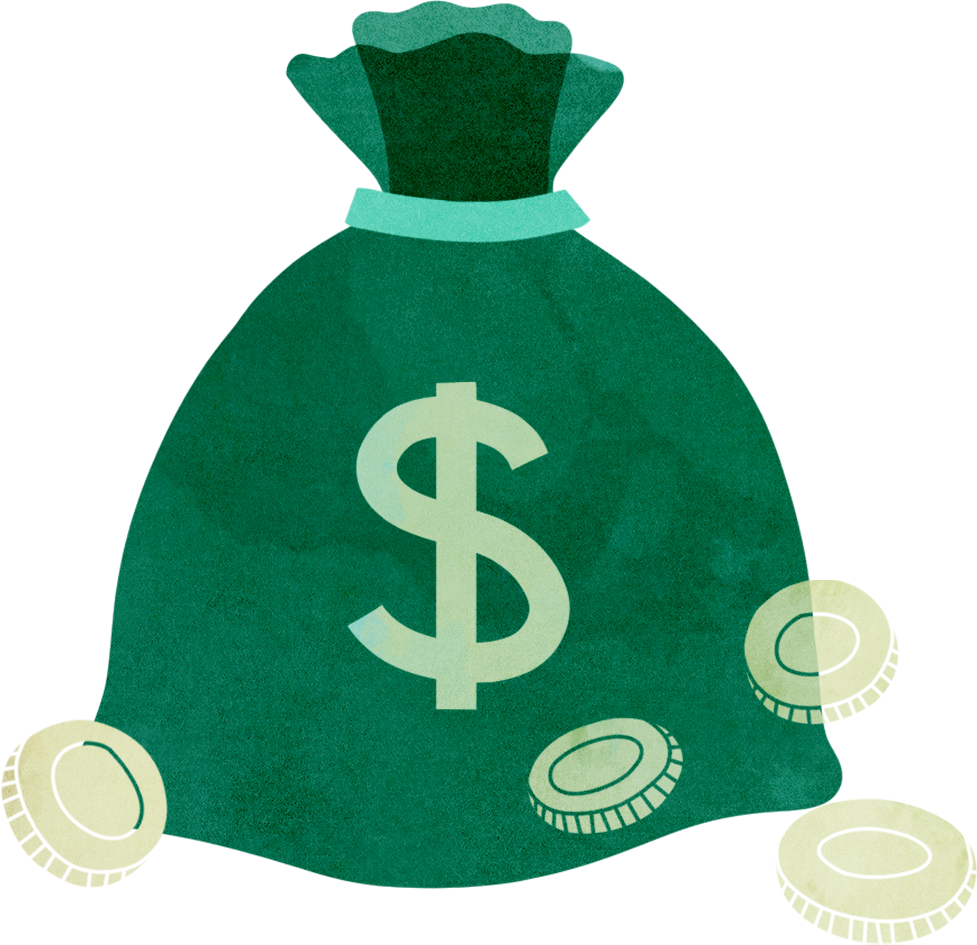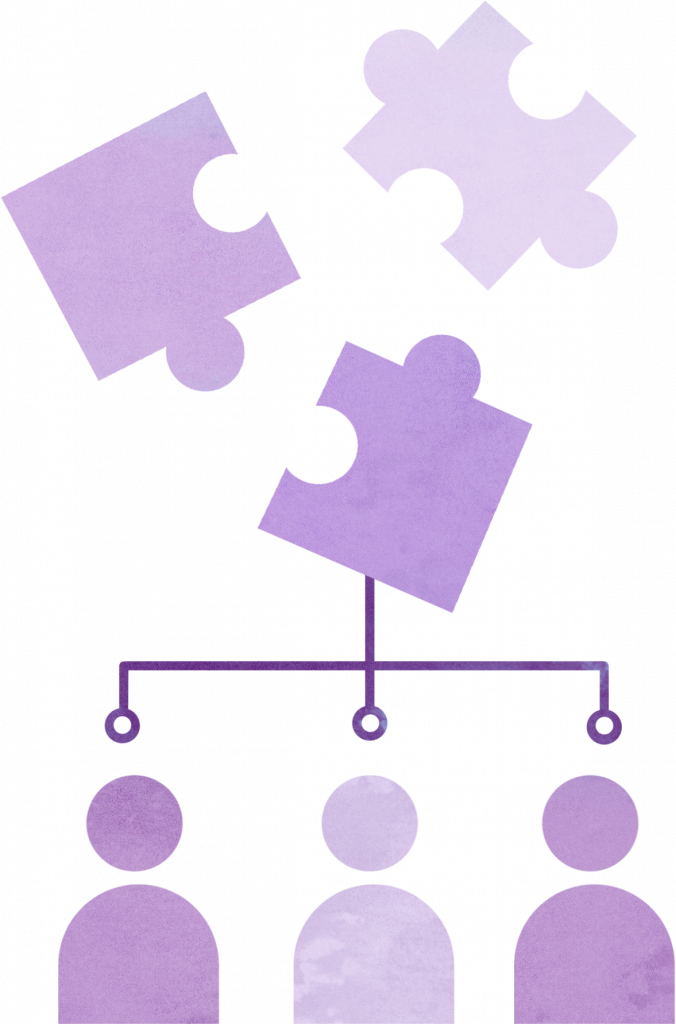Most citizen-led efforts around data stewardship within urban governance sectors are an outcome of non-profit engagements, research institutions and citizen scientists. This typically means they are either driven entirely by volunteership, or rely heavily on grants, philanthropic funding and broadly – funding with uncertain longevity. This existential uncertainty makes it difficult for initiatives to prepare longer term plans to be able to scale, leaving many potentially impactful efforts with limited data streams and a lack of cross-sectoral planning. This Play sets out strategies for various stakeholders to implement with the goal of improving the sustainability of data stewardship efforts in urban governance as well as their ability to scale.

Challenge u3.1
Dearth of institutional support and sustained funding pathways makes it difficult for community-centric data stewardship efforts to find visibility, scale and longevity.
Scalability is often a function of stakeholder engagement and management. Institutional support, beyond funding, can give stewards access to technical expertise, legal and policy support, training and mentorship and access to networks for further partnerships and long term support. In these crucial aspects, urban data governance solutions developed (whether by citizens or other stakeholders) require multi-stakeholder carryon to scale toward impact and participation.
Trust deficits across stakeholder groups tend to impede these opportunities, and create fissures at various levels of data sharing and governance initiatives. This deficit manifests at the level of data sharing, impacting the willingness to share information but also consequently impacts the investment in establishing sustainable systems of data collection/generation. Often, it is crises (or the aftermath of one) that create a milieu of wider support from stakeholders. However, now more than ever, state and non-state institutions alike are coming to an inflexion point with modes of participatory data governance. This presents an opportunity to offer mindful support to citizen efforts – one that requires an ecosystem-wide push from stakeholders.


Strategy u3.1.1
Multi-stakeholder partnerships allow for distributed funding, and clearer visibility on term

To broaden funding opportunities for community-oriented stewardship mechanisms, diverse stakeholder involvement allows opportunities for longer term funding, greater visibility on projects, and consequently, the potential for other offshoot partnerships.
Urban Observatory, in Newcastle, UK, is a community-led platform that is the outcome of a partnership between Newcastle University, Newcastle City Council, and several local organizations. The involvement of state agencies and universities allows greater visibility and avenues to garner funding and support. The platform allows citizens to access and analyse data about their city across a host of data types and compiles ongoing projects that have utilised the observatory. The sensor data from Urban Observatory have been used by collaborations between other universities, local groups and various state agencies across mobility, disaster management, air quality and more.
Japan’s Safecast reflects an instance of a citizen science effort that, to a great degree, was able to scale and garner global funding and support. In the wake of the nuclear power plant meltdown in Fukushima, there was an urgent need and demand for accurate and reliable radiation data in Fukushima and across Japan. This need was met with a large number of citizens using Geiger counters to measure radiation levels across the country. Safecast has since grown into a global network of citizen scientists utilising sensors to map radioactivity and radiation risks across the world. The majority of this growth was enabled by successful partnerships based on the micro-level impact achieved in early stages.
Forest Watchers, which began in Brazil, was an outcome of collaboration between Brazil’s National Institute for Space Research, the Citizen Cyberscience Centre, the Federal University of Sao Paulo and the Open Society Foundation. This network of collaborators has allowed the project to sustain its functioning and, with the World Resources Institute, is now a global network for communities to contribute to and learn from real-time forest change data. The project also resulted in an app that allows offline communities to partake and update data for areas of investigation and log other key data around tree loss, fires, etc. In some cases, the availability of this data has enabled legalised forest protection – Brazilian police forces have successfully utilised the platform to identify illegal forest action and prevent deforestation.




Strategy u3.1.2
In-kind support from stakeholders can better equip citizen-led groups to scale data governance efforts

Partnerships across stakeholders also create avenues for institutionalised support for community-oriented stewardship efforts. Where citizen science and volunteership alone may not harbour the technical capabilities required to achieve greater scale, institutional partners can fill that gap. Universities and other academic institutions play a vital role here, both in framing the problems and in supporting the deployment of data-driven technologies to achieve greater understanding and solutions toward public benefit.
In many cases, this technical gap is filled by private sector actors that are well-placed to problem solve at an infrastructural level. For this, state and civil society players must be adequately involved to ensure layered accountability and visibility toward citizens. Play 4 speaks in some more detail on how such accountability can be encoded when considering private sector collaborations.
Amsterdam is often heralded as a pioneer in many frameworks for smart city success. A portion of this success may be attributed to the city’s readiness to support ongoing citizen-led projects, enabling them to scale well and without existential unpredictability. One example is the Amsterdam Smart Citizens Lab. Founded by the Waag Society and in collaboration with the City of Amsterdam (and a handful of other partnerships across private and state actors), the Lab functions as a space to incubate and catalyse citizen science efforts in urban data.
Across the implemented projects, citizens are enabled to capture, log, access insights and more on data types like noise pollution, route management, air quality, water quality and more. Open source tools and sensors for many of these projects are helping upskill citizen scientists to form an active part of the broader urban research and governance community. The network is also consistently updated with funding opportunities and information on impact from projects.
Sensing Local, an urban living lab based in Bangalore, India, is another example of diversified partnerships that can aid stewardship efforts to scale for impact. Projects housed by Sensing Local work across waste management, walkability of city spaces, water supply and more. Training modules and other capacity building mechanisms toward better urban governance have found platform through collaborations with state civic and infrastructural municipal departments (such as BBMP).

Challenge u3.2
Participation burdens, value (in)articulation and ease of using collective governance solutions affects the sustainability of citizen motivation to participate – hampering the longevity of community-centric stewardship
The importance of citizen participation in urban data governance is not only limited to better governance of that data, or the solutions from it, but also lends itself to magnifying the democratic governance of cities. Urban data governance can also serve as a site to rebalance existing power asymmetries (or inadequacies) and better enable the existing mechanisms for consultative policymaking. However, a key challenge faced by state agencies and volunteer groups alike is sustaining the participation of citizens. This hampers the ability of communityoriented data governance mechanisms to scale, and to have longevity beyond initial stages of novelty. Prior to sustaining motivation, is the challenge of embedding incentives to participate at all. In many cases, particularly in disenfranchised, fringe or otherwise disadvantaged communities – the burden of participation is too high in the time and labour required from individuals. Further, technical capability (to varying degrees) often forms another barrier in how larger groups of citizens are enabled to access, utilise, or contribute to urban governance platforms and projects.
Meijer and Potjer’s analysis of citizen-generated open data use cases for motivation found that the ease of using applications fared highly on incentives to contribute data and time to initiatives, even in developed regions and cities. The need for usability and lightweight operability of community-oriented applications and platforms is essential to their sustenance. Sustaining these efforts, in turn, allows for their impact to be longer term and more quantifiable – often a key factor in garnering support from institutional partners.


Strategy u3.2.1
Multi-stakeholder partnerships allow for distributed funding, and clearer visibility on term

Citizen participation must be framed by governments and civil society organisations as not only a means to better lived outcomes, but as a political necessity – a sister of democratic governance in an increasingly digital age. Government agencies across geographies have been deploying newer forms of citizen involvement, each of which have different strengths in solving for community engagement.
Participatory budgeting denotes a process that involves citizens in decision-making by allowing them to vote, or otherwise submit ideas on how a portion of state budget will be used. For example, Lublin, Poland adopted a Green Citizens Budget, a process that has been replicated in many major cities. This enabled citizens to submit proposals and co-decide on the implementation of urban projects (greenery, recreation, etc) in the city. Submissions were invited at any level (from just an idea to detailed constructions plans). 24 of 107 projects saw implementation, and citizens were teamed up with relevant technical experts to realise the selected submissions. In our evaluation, this structure can be helpful in trust building and increased ownership, but often places significant onus on citizens for participating.
- Trust building: Citizens are motivated to think critically and have greater ownership over city decisions.
- Ease of policymaking: Low resource means to ensure participation as it relies on submission and only needs a panel of relevant experts to decide
- Lack of inclusivity: Particularly for this to be mirrored in Global South contexts, submitting ideas may prove too high a bar of participation in many regions. Ideally, civic participation should be streamlined by the state, not expected.
In Porto Alegre, Brazil, participatory budgeting has been in place since 1989 – on projects such as the installation of new playgrounds, the repair of public housing, and the creation of community gardens. The city utilises an online platform to allow citizens to vote on how to allocate a portion of the city’s budget for public projects.
Cities like London, New York, Chicago and Paris have also implemented participatory budgeting. While this helps build civic interest and ownership in urban governance, it may not prove useful to many Global South contexts, since the method is predicated on citizen’s ability to contribute ideas, access portals to vote, and communities’ bandwidth to engage with planning-level concerns in urban life. Global South contexts and populations may require more first-premise solutions to participation, and importantly – a keen effort to harmonise with communities’ understanding of ‘smart’ cities goals and purposes.
Singapore’s Smart City efforts: My Transport app in Singapore allows citizens to access real-time information on public transportation and plan journeys more efficiently, and allows citizens to provide feedback to improve service. Within the app, the Singapore government regularly measures and communicates impact from its solutions. This highlights a small way in which impact can be communicated.



Strategy u3.2.2
Reducing barriers of participation for citizens’ involvement in urban governance and decision-making

Reducing the burden and gating elements for citizens to partake in urban data governance can be understood at two levels – first, the ease of using or contributing to novel urban data governance solutions and second, the establishment of platforms with the express goal of easing citizen participation in pre-existing modes of consultative policy-making. Simplicity by design has informed many successful community data-generation solutions within the urban data context. Allowing citizens across the spectrum of technical know-how to participate is essential to scaling these efforts. Community mapping platforms and citizen reporting tools are an area where this simplicity has been instantiated widely, and can serve as guiding examples.
OpenStreetMap, updated and maintained by a volunteer base, allows individuals and community groups globally to collaborate on creating detailed maps of their neighbourhoods, including information on important resources like public transportation, community gardens, and local businesses. It has seen significant adoption spurred both by private competitors upping pricing (while Open remains free) and by its ease of usage. Smaller, neighbourhood, city or district level parallels exist across the globe as well, often targeting specific problem areas like wheelchair accessibility (Wheelmaps was based on and enabled by OpenStreetMap). They have also been deployed as a means to increase government accountability to citizens, and visibility on non-emergency urban issues that require state resources or problem solving (SeeClickFix, Connecticut).
Easing the participation of citizens in existing avenues for community engagement in urban decision-making and its visibility can be achieved to a great degree through governance platforms. Cloud-based citizen engagement platforms like Civvy enable participation in urban governance by allowing a direct, confidential link with city officials – to provide suggestions and opinions on ongoing city projects. Citizenlab, launched in 2016, has been adopted by cities across the EU. The platform sends data directly to the public through a mobile interface, and officials are enabled to see live results from surveys and questionnaires. This data can then be used to make policy decisions based on real-time or collated citizen insights.
Similar to these, platforms like Civocracy also support citizen engagement by reducing the burden of attendance and participation through traditional methods (such as city halls, consultations) and allow real time participation. These methods and platforms differ in the degrees of participation and civic engagement that they allow for (for eg, engagement platforms do not typically constitute a dialogue with public interest officials, while crowd sourced and communitybuilt efforts typically allow a higher degree of ownership, insight engagement with urban decision-making). However, it is necessary for governments at state levels and district or department levels to prioritise means of greater citizen engagement, and the examples discussed provide a few helpful frameworks – which are needed in various combinations based on jurisdictional contexts.
